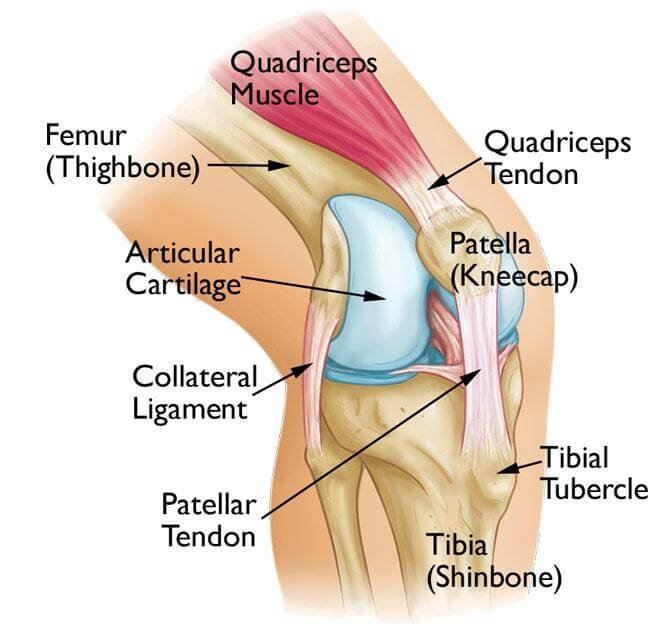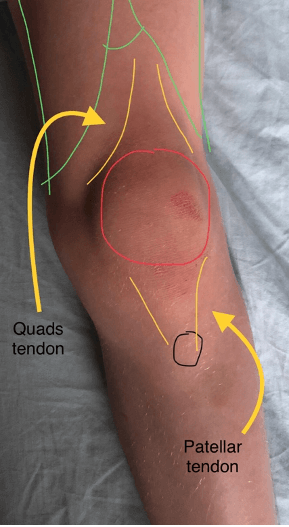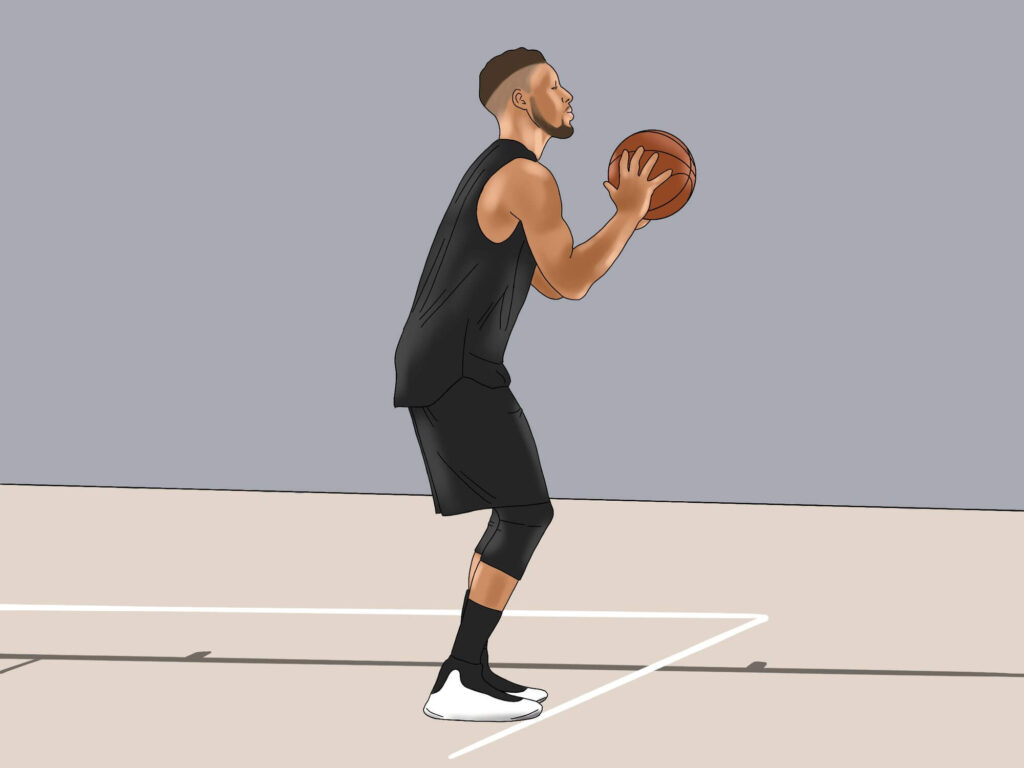Osgood-Schlatter Disease, a condition that primarily affects adolescents and young athletes, is a well-known but often misunderstood ailment that can be both physically and emotionally challenging. Named after the physicians who first described it in 1903, Dr. Robert Osgood and Dr. Carl Schlatter, this condition can cause persistent knee pain and discomfort, hindering the active lifestyles of those who suffer from it. In our comprehensive guide, we will delve into the intricate world of Osgood-Schlatter Disease, shedding light on its causes, symptoms, and various treatment options. By the end of this exploration, you will be armed with the knowledge to better understand this condition and how to navigate its impact on your or your loved one’s life.

The journey to understanding Osgood-Schlatter Disease begins with its causes. While it is prevalent in adolescents engaged in sports and physical activities, the exact triggers of this condition remain a topic of medical interest and debate. We will examine the multifaceted origins of Osgood-Schlatter Disease, exploring both the structural and biomechanical aspects that play a role in its development. Moreover, we will discuss the genetic and environmental factors that may contribute to its occurrence, providing a comprehensive view of the factors that may predispose an individual to this condition.
As we venture further into the world of Osgood-Schlatter Disease, we will explore the range of symptoms that individuals experience when dealing with this ailment. Knee pain is the hallmark feature of this condition, but we will discuss the various ways in which it manifests, as well as the potential impact on one’s daily life, activities, and overall well-being. By understanding the symptoms, those affected by Osgood-Schlatter Disease can better navigate their personal experiences and seek timely medical attention when necessary.
Finally, our guide will provide a detailed overview of the diverse treatment options available for Osgood-Schlatter Disease, including both conservative and surgical approaches. We will discuss physical therapy, pain management strategies, and lifestyle modifications that can help alleviate the discomfort associated with this condition. Additionally, for those cases that require more intensive intervention, we will explore the surgical techniques and recovery processes involved, ensuring that our readers are well-informed about all potential courses of action.
By embarking on this journey through the intricate world of Osgood-Schlatter Disease, we aim to empower our readers with the knowledge needed to not only understand the causes, symptoms, and treatment options but also to foster a sense of hope and resilience in the face of this challenging condition. Osgood-Schlatter Disease need not define one’s life, and with the right information and support, individuals can navigate its complexities and continue to pursue an active and fulfilling life.
Origins of Osgood-Schlatter Disease
The origins of Osgood-Schlatter Disease are a subject of ongoing research, as the condition’s development is influenced by a combination of factors. While it commonly occurs in adolescents during their growth spurts, the exact cause remains multifaceted. Understanding these contributing factors is essential for both individuals living with the condition and healthcare professionals striving to provide the best care. Here are some key elements contributing to the origins of Osgood-Schlatter Disease:
Growth Spurts and Rapid Development
Osgood-Schlatter Disease often emerges during the growth spurts that accompany adolescence. At this stage, the bones, tendons, and muscles are growing at different rates. The growth plates, also known as epiphyseal plates, are areas of active, growing tissue near the ends of long bones. The quadriceps muscles, responsible for straightening the knee, attach to the tibial tuberosity, a bony prominence just below the kneecap. The stress and tension placed on these areas during rapid growth can lead to microtrauma and inflammation, setting the stage for Osgood-Schlatter Disease.
Overuse and Physical Activity
Participation in sports and physical activities, especially those involving running, jumping, and abrupt changes in direction, can increase the risk of Osgood-Schlatter Disease. These activities place repeated stress on the patellar tendon, which connects the kneecap to the tibial tuberosity. The cumulative effect of this stress can result in irritation and inflammation of the tendon, further exacerbating the condition.
Biomechanical Factors
Individual biomechanics, such as gait and alignment, play a significant role in the development of Osgood-Schlatter Disease. Malalignment of the lower extremities, flat feet, or tight quadriceps muscles can increase the strain on the patellar tendon and tibial tuberosity, making one more susceptible to the condition.
Genetics and Hormonal Factors
While genetics alone do not cause Osgood-Schlatter Disease, there may be a genetic predisposition that influences how an individual’s body responds to the factors mentioned above. Hormonal changes during puberty can also affect bone growth and development, potentially contributing to the condition.
Environmental Factors
Environmental factors, such as the type of sports and training regimens followed, can influence the development of Osgood-Schlatter Disease. For example, participating in sports that require frequent jumping or sudden accelerations may increase the risk. Additionally, training intensity and volume can play a role in the development of the condition. Proper training techniques, adequate rest, and appropriate stretching and strengthening exercises can help reduce the likelihood of Osgood-Schlatter Disease.
In conclusion, Osgood-Schlatter Disease is a complex condition with origins that involve a combination of growth-related factors, physical activity, biomechanics, genetics, hormones, and environmental influences. Understanding these origins is essential for effective management and prevention. By comprehending the underlying causes, individuals and healthcare providers can tailor treatment and preventive strategies to better address the unique circumstances of each case.
Symptoms of Osgood-Schlatter Disease
Osgood-Schlatter Disease is characterized by a range of symptoms that can vary in intensity and duration. These symptoms primarily manifest in the knee region and can have a significant impact on an individual’s daily life, particularly in those who lead active lifestyles. Recognizing these symptoms is crucial for an accurate diagnosis and appropriate management. Here are the key symptoms associated with Osgood-Schlatter Disease:

1. Knee Pain
Pain in the front of the knee is the hallmark symptom of Osgood-Schlatter Disease. The pain typically centers around the tibial tuberosity, the bony prominence just below the kneecap. This pain can be sharp, aching, or throbbing, and it may become more pronounced during or after physical activities, especially those that involve running, jumping, or squatting.
2. Swelling and Tenderness
Inflamed and swollen tissues around the tibial tuberosity can lead to tenderness and localized swelling. The area may feel warm to the touch and may be sensitive to pressure, making kneeling or putting weight on the affected knee uncomfortable.
3. Enlarged Bump
Over time, the persistent pulling of the patellar tendon on the tibial tuberosity can result in a visible bump or prominence just below the kneecap. This bump, known as a “tibial tuberosity prominence,” is a characteristic feature of Osgood-Schlatter Disease and may be more prominent during periods of active growth.
4. Stiffness and Limited Range of Motion
Individuals with Osgood-Schlatter Disease may experience stiffness in the knee joint, and they may find it challenging to fully extend or flex the affected leg. This stiffness can further impede physical activities and may lead to altered movement patterns.
5. Worsening Symptoms with Activity
Symptoms of Osgood-Schlatter Disease are often exacerbated by physical activity. The pain and discomfort typically intensify during or after participating in sports, running, jumping, or any activities that place stress on the knee joint.
6. Relatively Normal X-ray Findings
X-ray images of the knee in individuals with Osgood-Schlatter Disease may show some signs of the condition, such as irregularities in the tibial tuberosity. However, the absence of severe structural abnormalities on X-rays is common. Diagnosis is primarily based on clinical symptoms and physical examination.
7. Bilateral Involvement
Osgood-Schlatter Disease can affect one or both knees simultaneously or at different times. Bilateral involvement is not uncommon, and individuals may experience symptoms in both knees, which can significantly impact their ability to engage in physical activities.
It’s important to note that the severity and duration of Osgood-Schlatter Disease symptoms can vary among individuals. Some may experience only mild discomfort, while others may find the condition to be more disabling. Understanding these symptoms and their impact on daily life is essential for both individuals living with the condition and healthcare professionals, as it informs treatment decisions and rehabilitation strategies. Early recognition and management can help individuals cope with Osgood-Schlatter Disease more effectively and return to their desired level of physical activity with minimized discomfort.
Treatment Options for Osgood-Schlatter Disease
The treatment of Osgood-Schlatter Disease is primarily aimed at managing symptoms, reducing pain, and helping individuals maintain an active lifestyle while minimizing discomfort. Treatment strategies can vary from conservative approaches to surgical intervention, depending on the severity of the condition and the individual’s specific needs. Here, we outline the main treatment options for Osgood-Schlatter Disease:
1. Rest and Activity Modification
One of the most crucial aspects of managing Osgood-Schlatter Disease is allowing the affected knee time to heal. This often involves temporarily reducing or modifying physical activities that exacerbate symptoms. Rest and activity modification help minimize strain on the patellar tendon and tibial tuberosity, allowing inflammation to subside.
2. Physical Therapy
Physical therapy plays a pivotal role in the treatment of Osgood-Schlatter Disease. Physical therapists can design tailored exercise programs to strengthen the quadriceps, hamstrings, and calf muscles while improving flexibility and range of motion. These exercises can help stabilize the knee joint and reduce the risk of further injury.
3. Pain Management
Over-the-counter non-steroidal anti-inflammatory drugs (NSAIDs) like ibuprofen or acetaminophen may be recommended to manage pain and reduce inflammation. It is important to use these medications under the guidance of a healthcare professional and only for short-term relief.
4. Knee Straps and Braces
Knee straps or braces can help distribute the force on the patellar tendon, reducing tension on the tibial tuberosity. These devices may provide temporary relief during physical activities.
5. Ice and Heat
Applying ice to the affected knee can help reduce pain and inflammation. Heat therapy may be used to relax and loosen tissues, especially before engaging in physical therapy exercises.
6. Stretching and Strengthening Exercises
A consistent home exercise program, guided by a physical therapist, can help maintain knee joint function and reduce symptoms. Stretching and strengthening exercises can be an essential part of long-term management.
7. Lifestyle Modifications
Incorporating lifestyle modifications, such as wearing cushioned footwear, using shock-absorbing insoles, and avoiding activities that place excessive stress on the knees, can reduce the risk of symptom exacerbation.
8. Surgical Intervention (Rare Cases)
Surgical intervention is considered in rare cases when conservative treatments have not provided relief, and symptoms are severe or persistent. Surgical options may include the removal of the bony prominence (tibial tuberosity) or realignment procedures. It’s important to note that surgery is generally considered a last resort due to potential complications and the need for an extensive recovery period.
9. Monitoring and Follow-Up
Regular check-ups with a healthcare provider are essential to monitor the progress of Osgood-Schlatter Disease. Adjustments to treatment plans may be made based on the individual’s response to therapy and any changes in symptoms.
It’s crucial to recognize that Osgood-Schlatter Disease is a self-limiting condition, and symptoms often resolve once an individual’s bones have finished growing, typically in late adolescence. However, timely and appropriate management can significantly improve an individual’s quality of life during this challenging period.
Ultimately, the choice of treatment should be tailored to the individual’s unique circumstances, and it’s advisable to consult with a healthcare professional, such as a pediatrician, orthopedic specialist, or physical therapist, for personalized guidance and support in managing Osgood-Schlatter Disease.
Conclusion
Osgood-Schlatter Disease, a condition often encountered during adolescence, is a source of discomfort and physical limitation for many young individuals. This comprehensive guide has delved into the intricacies of Osgood-Schlatter Disease, shedding light on its causes, symptoms, and the range of treatment options available. In conclusion, understanding this condition is crucial for both those directly affected by it and the healthcare professionals tasked with its management.
Osgood-Schlatter Disease is a multifaceted ailment with origins tied to growth spurts, physical activity, biomechanics, genetics, hormones, and environmental factors. While its exact cause may remain elusive, our exploration of these contributing factors provides a more holistic view of the condition. This understanding is invaluable for tailoring treatment strategies and preventive measures.
Recognizing the symptoms of Osgood-Schlatter Disease is vital for an accurate diagnosis and timely intervention. Knee pain, swelling, tenderness, and limited range of motion can significantly impact an individual’s daily life, particularly if they are engaged in sports and physical activities. Identifying these symptoms allows for effective management and relief.
Treatment options for Osgood-Schlatter Disease range from conservative approaches, including rest, physical therapy, pain management, and lifestyle modifications, to surgical interventions in rare and severe cases. The goal of treatment is to minimize pain, improve knee function, and allow individuals to continue leading active lives with reduced discomfort.
In the journey to manage Osgood-Schlatter Disease, one must remember that this condition is often self-limiting, and symptoms tend to resolve with the completion of the growth process. However, this doesn’t mean individuals should endure unnecessary pain and limitations. Early recognition, appropriate treatment, and a multidisciplinary approach involving healthcare professionals, physical therapists, and individuals themselves can make a significant difference in the experience of Osgood-Schlatter Disease.
As we conclude this guide, our aim is to empower individuals and their families with knowledge that will help them navigate the complexities of Osgood-Schlatter Disease with resilience and hope. By understanding its origins, recognizing its symptoms, and exploring available treatments, individuals can take charge of their health, make informed decisions, and strive to lead fulfilling lives while managing this challenging condition.




